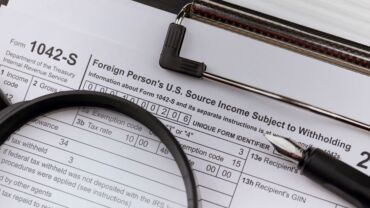IRS Form 3903 (Moving Expenses) (2016)
Available at https://www.irs.gov/pub/irs-prior/f3903–2016.pdf
The IRS has released the 2016 version of Form 3903 (Moving Expenses), which is used by individuals (whether employed or self-employed) to calculate and report deductible work-related moving expenses. As background, when a move is related to the start of work at a new principal workplace, individuals who meet both the distance and time tests may be eligible for a federal income tax deduction for the reasonable expenses of moving their household goods and personal effects, and of traveling from their old homes to their new homes. Form 3903 is attached to the Form 1040 tax return to obtain the deduction. Individuals completing Form 3903 must enter their total eligible moving expenses and the amount of any employer reimbursements for those expenses that were not included in wages (those reimbursements should be shown in Box 12 of the individual’s W-2 with Code P). If the total moving expenses exceed the employer’s reimbursements, the excess is deductible on the individual’s federal income tax return. And if the employer reimbursements exceed the individual’s total eligible moving expenses, the excess is included in the individual’s taxable income. The instructions to Form 3903 explain the distance and time tests and include a worksheet for determining whether the distance test is met.
The 2016 Form 3903 is almost identical to the 2015 version. However, the instructions have been revised to reflect the 2016 standard mileage rate for individuals who use their own vehicles to move to a new home, which is 19 cents per mile (see our Checkpoint article). For future developments and additional information, taxpayers are directed to the IRS’s Form 3903 webpage. The webpage offers links to Form 3903 for prior years, the webpage for IRS Publication 521 (Moving Expenses), and other relevant IRS resources.
EBIA Comment: Code § 132(g) allows employers to provide certain moving expense reimbursements directly or indirectly to their employees on a tax-free basis, so long as the moving expenses would have qualified for a deduction from income on the employee’s individual federal income tax return. In addition, employers often provide nonqualified moving expense benefits, which are includible in the employees’ taxable income. Form 3903 helps employees calculate the amount they can exclude from income if tax-free reimbursements do not cover all of their qualifying expenses, or the amount they must report as additional taxable income if untaxed reimbursements exceed their qualifying expenses. For more information, see EBIA’s Fringe Benefits manual at Section XVII.F (“Tax Treatment of Qualified and Nonqualified Moving Expense Benefits”). You may also be interested in our upcoming webinar “Workplace Fringe Benefits” (live on 10/19/16).
Contributing Editors: EBIA Staff.







